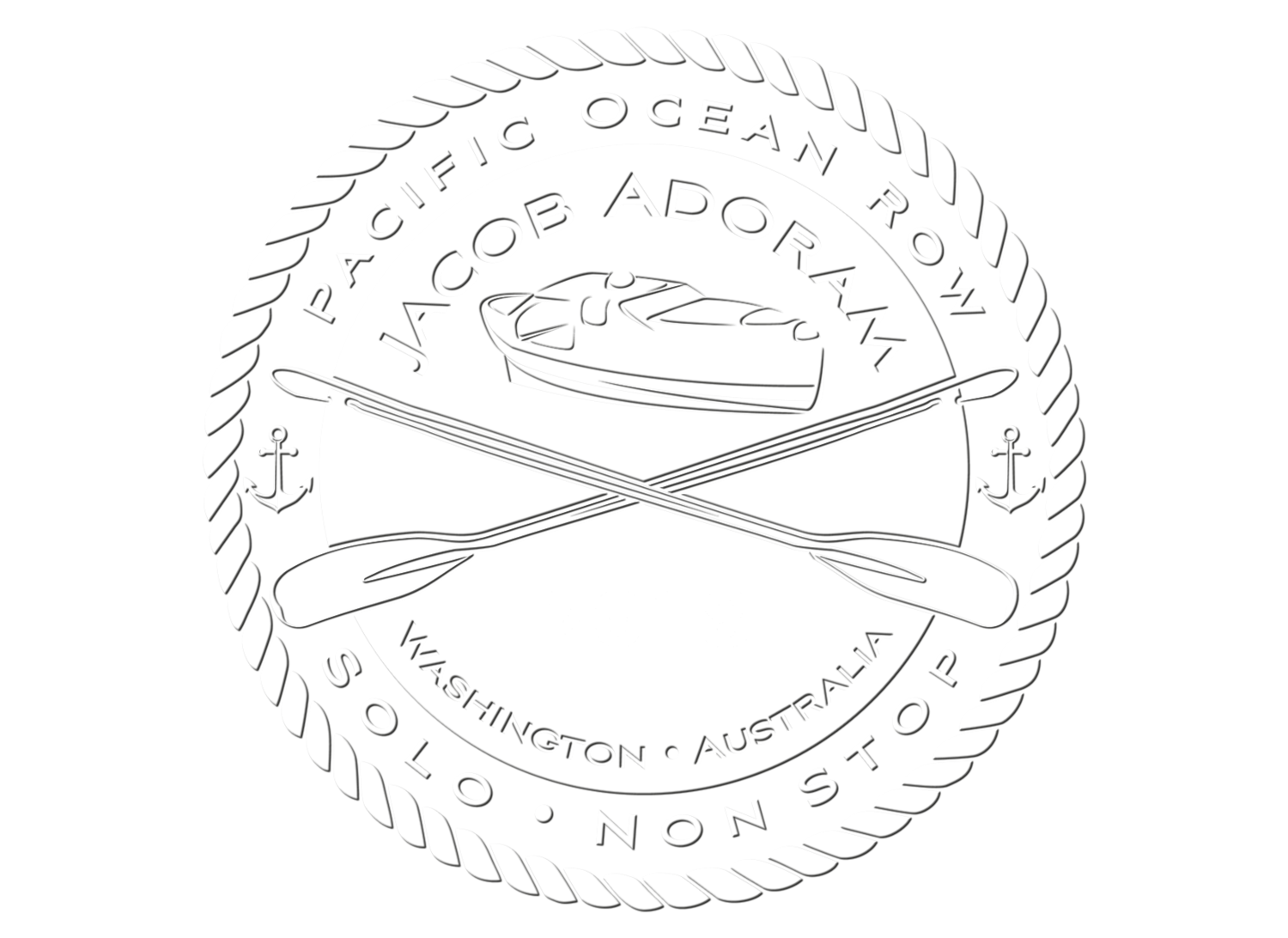The Route
The planned route was from Washington State to Northeast Australia. As a direct route, the distance is 7,145 statute miles. Of course, the actual journey was anything but direct. In total, the ground track covered over 10,000 nautical miles. In the planning phase, back when the idea to row the Pacific was still just an idea, I thought I would start by looking at previous crossings to determine potential routes. By looking at what had already been accomplished, I got a better understanding of potential start-stop points, the required time, and typical departure time-frames. Below is a map I created to better understand the routes through a graphical representation. Information regarding the previous routes is courtesy of the Ocean Rowing Society Int.
You'll notice that I drew the routes in direct lines. This is mainly because it's virtually impossible to get the actual routes. However, it did serve to provide some insight on what each rower needed to accomplish each day to complete these journeys, regardless of any deviation from the direct routes. Written out in text form, below you can get some better insight into what each rower accomplished.
Once I had this information, I noticed only one attempted crossing of the entire Pacific Ocean from North America to Australia non-stop. That attempt was Mr. Peter Bird in 1982 leaving from San Francisco, CA. He made it nearly the entire way, tantalizingly close, but was rescued off the coast of Australia near the Great Barrier Reef. I haven't found many details of what exactly happened or why he didn't make landfall in Australia. However, the Ocean Rowing Society has informed me that it was due to terrible weather conditions while approaching land (explanation below). Since the Great Barrier Reef is a territory of Australia, the ocean rowing community (and myself), consider Mr. Bird the first man to complete a non-stop Pacific crossing. Sadly, he was later lost at sea in an attempt to cross the Pacific West to East.
Going back to the text graphic, you'll notice two lines in red, one for Mr. Bird and the other for Mr. Erden Eruc. Those two rows most closely matched what I decided to attempt. By taking their average miles per day, and considering the combined averages of the other rowers, I came upon expecting to accomplish 20-30 miles per day as a worst and best case barometer. Of course, this was later revised with experimentation in training, boat performance, and my physical capabilities. However, I began construction of Emerson with the expectation that I would be at sea between 238 days and 357, or about 7.8 to 11.7 months. With this information, I decided upon the design parameter of including enough storage for 350 days. Of course, I was hoping the timeline would be closer to the shorter end of the window.
In the end, it took 336 days to complete, nearly 11 months exactly (within an hour), which came to 21.3 miles per day. This is fairly remarkable because Emerson ended up bigger and heavier than most solo ocean rowing boats. The larger surface area above the waterline also created additional windage challenges. However, the larger size of Emerson also provided for enough food storage to complete the crossing without any resupplies. Completing a non-stop route from North America to Australia without a resupply had never been accomplished prior to my journey, making it a first for the record books. It also ended up being the longest, solo, non-stop row, which will be published in the Guinness Book of World Records.
Information from the Ocean Rowing Society:
On your page you were asking about Peter Bird's row to Australia. As long as the Great Barrier Reef is a territory of Australia, Peter has officially completed his row. As a matter of fact, entering Bismark Sea or Solomon Sea marks the end of the Pacific crossing (though it is a pride of any Pacific E-W ocean rower to make landfall in Australia). If you have seen the film "The Longest Row", you would know that skipper of the yacht that went out to meet Peter insisted on Peter's transfer on board the yacht, because it became too dangerous to go on rowing. Shortly after Peter was picked up, his boat smashed against the reef...
I made a mistake - it was not a yacht that went out to meet Peter Bird, it was an Australian Navy ship, sent by the Navy. It was very dramatic, the words of Captain were very powerful. He said: "Mister Bird, I am under order to offer you assitance. I must ask for your answer immidiately as I can no longer allow my crew and ship to be in danger".
You can see the actual ground track of my crossing here.
